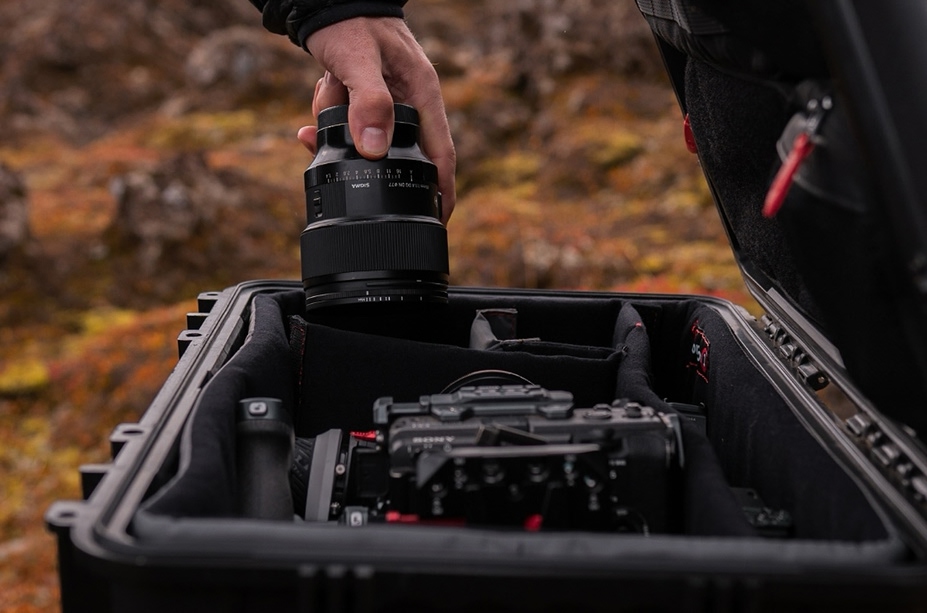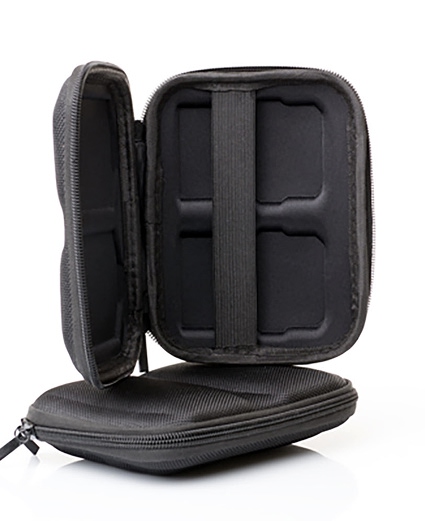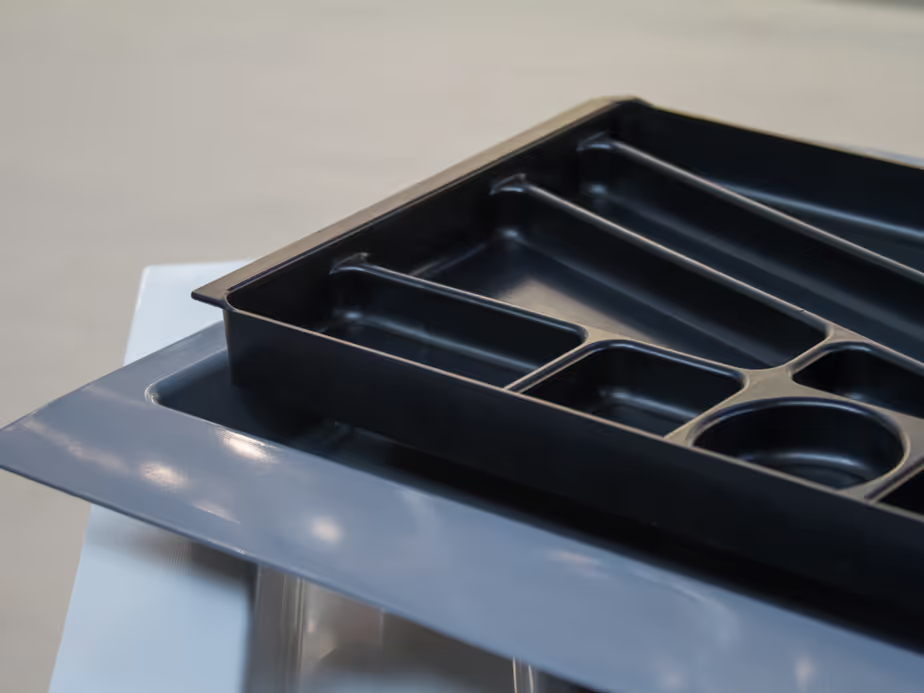Filed Under:
Manufacturing
Published on
August 23, 2025

Protective cases for critical equipment must deliver more than just storage—they must ensure readiness under pressure forming. When failure isn't an option, the insert’s fit, strength, and reliability play a vital role in performance.
Thermoforming offers a dependable solution. Using heated plastic sheet options creates durable, custom-fit interiors that protect sensitive tools and devices in demanding environments.
This guide straightforwardly explains the thermoforming process. You’ll learn what it is, why it’s used, and how it supports key industries like military, medical, and electronics.
Whether you're considering it for performance, volume, or material flexibility, this overview will help you understand its strengths and practical benefits, including compatibility with material handling equipment.
Thermoforming is a versatile plastic manufacturing process that involves four fundamental stages: heating, forming, cooling, and trimming. At its core, the process begins by heating a thermoplastic sheet until it becomes soft and pliable.
This sheet is then shaped over or into a mold using various forming methods such as vacuum, pressure, or mechanical forming. Once the plastic cools and solidifies to hold the mold’s shape, any excess plastic is trimmed to create the final product.
This process is highly adaptable and accommodates a range of thermoplastic sheet thicknesses, from thin-gauge films used in disposable packaging to heavy-gauge sheets for manufacturing robust, durable items like custom hard cases.
Thermoforming molds can be metal molds, machined, hand-crafted, or even 3D printed, depending on the volume and complexity requirements.

A rugged protective case with a precision thermoformed insert secures sensitive electronic equipment.
Protective cases are the first defense against operational threats that compromise or destroy valuable equipment. These threats include:
A properly engineered thermoformed interior directly counters these risks. Careful material selection and precision design result in a tailored cavity that secures equipment, absorbs impact, and limits unwanted movement. This approach supports the development of plastic parts in rigorous settings.
This precision fit ensures that sensitive electronics, calibrated tools, and life-saving medical equipment arrive fully functional and ready for deployment.

A state-of-the-art thermoforming machine running within a clean, advanced manufacturing environment, reflecting the precision and quality standards essential to custom protective case production.
The process begins by securing a plastic sheet in a clamping frame and moving it into an oven. Using advanced infrared (IR) heating panels, the sheet is heated uniformly to its optimal forming temperature.
Maintaining temperature uniformity is critical, as inconsistent heating can lead to webbing (wrinkles) or thin spots in the final part, compromising its structural integrity.
Once pliable, the heated plastic sheet is moved over a mold. A vacuum pulls the sheet tightly against the mold's surface in the vacuum forming process.
For parts requiring sharper detail, pressure forming is used, which adds positive air pressure to push the sheet firmly into the mold. For deep-draw parts, a plug-assist often pre-stretches the plastic material for uniform wall thickness.
After forming, the plastic must be cooled to solidify, a step crucial for dimensional stability. Cooling is accelerated using high-volume fans or chilled water channels within the mold.
Once cooled, draft angles engineered into the tool facilitate an easy release of the part without scuffing or damage.
The final step is to trim the formed part from the excess material. Precision is key for complex, high-tolerance case interiors, especially those used for shipping trays.
The choice between vacuum and pressure forming depends on the part's requirements for detail, texture, and structural complexity.
Vacuum forming relies on atmospheric pressure to pull heated plastic against a mold surface. It’s a straightforward, cost-effective method best suited for parts with smooth curves and minimal detail. Typical applications include food packaging, equipment trays, covers, and simple case inserts.
Pressure forming applies additional air pressure during molding, allowing the plastic to conform closely to intricate shapes and delicate textures. This results in sharp corners and a refined surface finish that matches the plastic injection molding quality.
Pressure forming is ideal for components where visual detail and precision matter, such as electronic enclosures, medical panels, or high-performance protective case interiors.
The comparison below highlights key differences to help identify which method delivers the best performance for your project requirements.
Thermoforming processes differ significantly based on the thick gauge of the plastic sheet—which directly impacts equipment selection, production speed, and final application suitability.
Thermoforming supports various applications depending on material thickness and performance requirements. The table below outlines typical uses for both thin-gauge and heavy-gauge thermoformed components.
Understanding the difference between thin- and heavy-gauge thermoforming helps match the right material and design to the application’s demands. Whether you need sterile disposability or rugged impact resistance, the correct gauge delivers better performance and value.

Material selection drives the performance of a thermoformed case insert. Choosing the right polymer is a critical decision that balances impact strength, chemical resistance, temperature stability, and cost. Other options can include a custom EVA case for different applications.
Well known for excellent impact resistance and good chemical resistance; withstands moderate temperatures (good temp. range); moderate cost; easily recyclable.
Superior impact strength (toughest among common plastics); chemical resistance is fair to moderate (can be sensitive to some solvents); excellent temperature range (high heat resistance); higher cost; recyclable.
Outstanding impact strength; excellent chemical resistance; good temperature tolerance (though not as high as polycarbonate); low material cost; highly recyclable.
Good impact strength; fair chemical resistance (less resistant than HDPE or ABS); moderate temperature resistance; low cost; recyclable.
Excellent impact strength (better than regular PET), good chemical resistance, good temperature range, moderate cost, and recyclable.

Macro shot of a complex, precision-machined aluminum production mold emphasizing its intricate details.
The mold, or "tool," is the heart of the thermoforming process. Its material and construction depend on the project stage and production volume. For prototypes, a 3D-printed tool can be created in under a week for quick fit checks. For pilot runs, an epoxy-tooling board is a cost-effective intermediate step.
For full-scale production, temperature-controlled aluminum molds are the standard. These durable tools can produce hundreds of thousands of parts with perfect consistency.
Expert tool design is critical for success. Engineers must account for draft angles, structural ribs, and undercuts to ensure a high-quality, repeatable thermoformed part.
For Original Equipment Manufacturers (OEMs) and those needing custom case solutions, thermoforming presents a powerful combination of benefits:
The versatility of thermoforming makes it ideal for a diverse range of industries where protection and precision are non-negotiable.
Thermoformed solutions are ideal alternatives for precision carriers and components where the twin sheet forming techniques can be utilized in matched mold forming systems to enhance structure and rigidity.
No matter the application, these custom solutions help ensure safety, efficiency, and reliability where it matters most.
The thermoforming process delivers design flexibility, fast turnaround, cost efficiency, and long-lasting durability. It is an ideal method for producing custom protective case interiors tailored to critical equipment.
When failure isn't an option, thermoformed inserts offer the precision and dependability needed to safeguard valuable assets, with peace of mind built in.
Looking for a custom case solution? Work with Royal Case Company to design thermoformed cases that deliver the protection, fit, and performance your project demands.